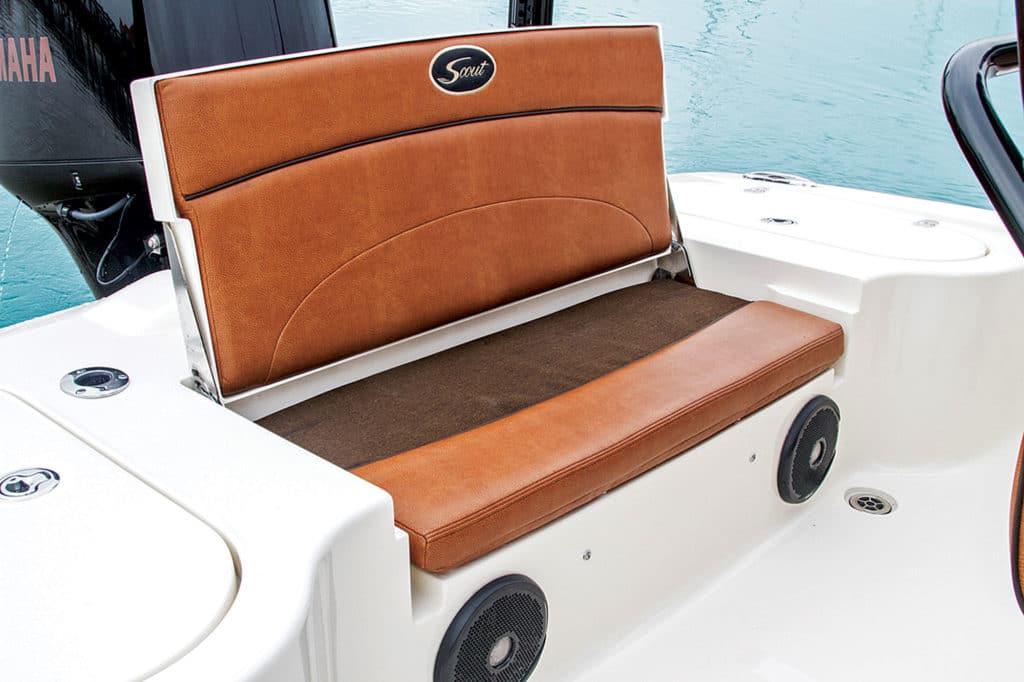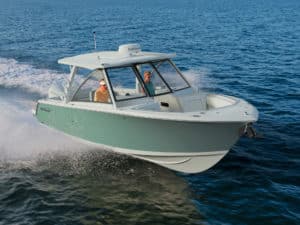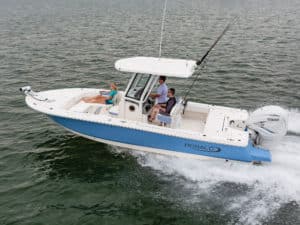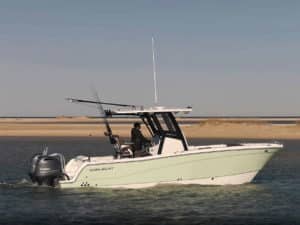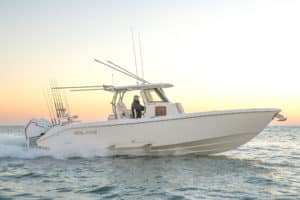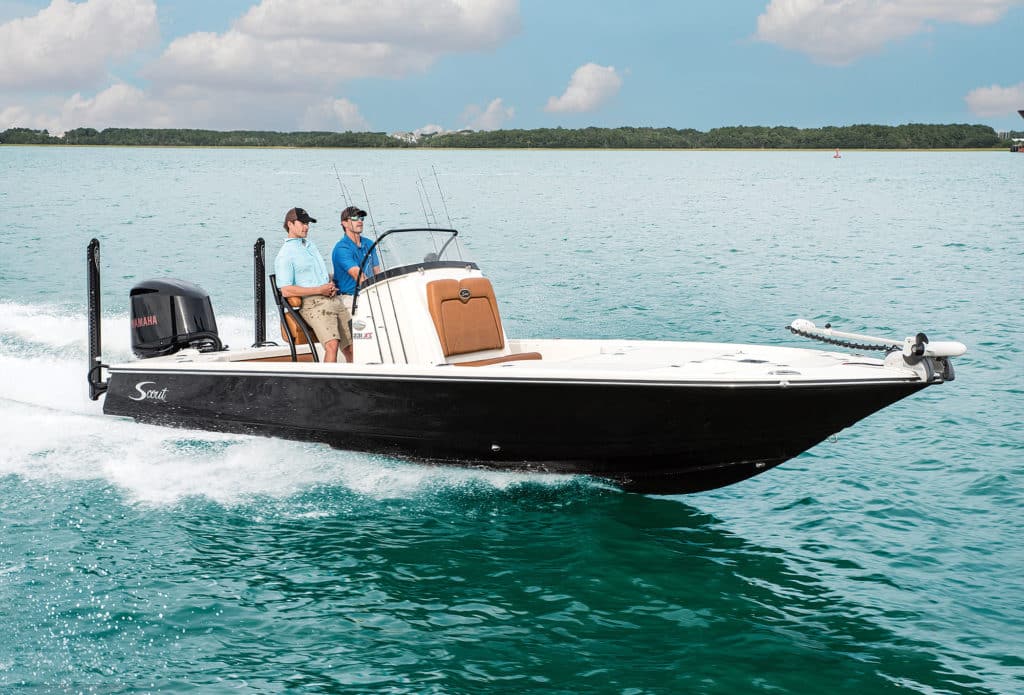
When Scout‘s Alan Lang motored the new 231 XS to a floating dock at Sands Boat Landing in Port Royal, South Carolina, I was struck by how big the 23-footer appeared. I had seen the boat two weeks before, during a Charleston downpour, but this time — on a bright, sunlit October afternoon — the black-hulled bay boat with the proud bow seemed to have grown.
“Is this the same boat I saw before?” I asked Lang, Scout’s national sales manager, and James Pate, regional sales rep. Pate confirmed that it was as I handed down my cameras and backpack.
Size and Space
I boarded and stowed my gear beneath the console, which is accessed by lifting the forward face of the helm unit using a leash handle at its base. This is the only point at which the 231 shows its actual size: I backed up to the foredeck step to fully open the console.
Otherwise, this Scout fishes big. The foredeck fills the full 8 feet 6 inches of beam width and much of the distance between the console and forepeak. Lang says the design was meant to attract hardcore inshore tournament fishermen who want “a little more.”
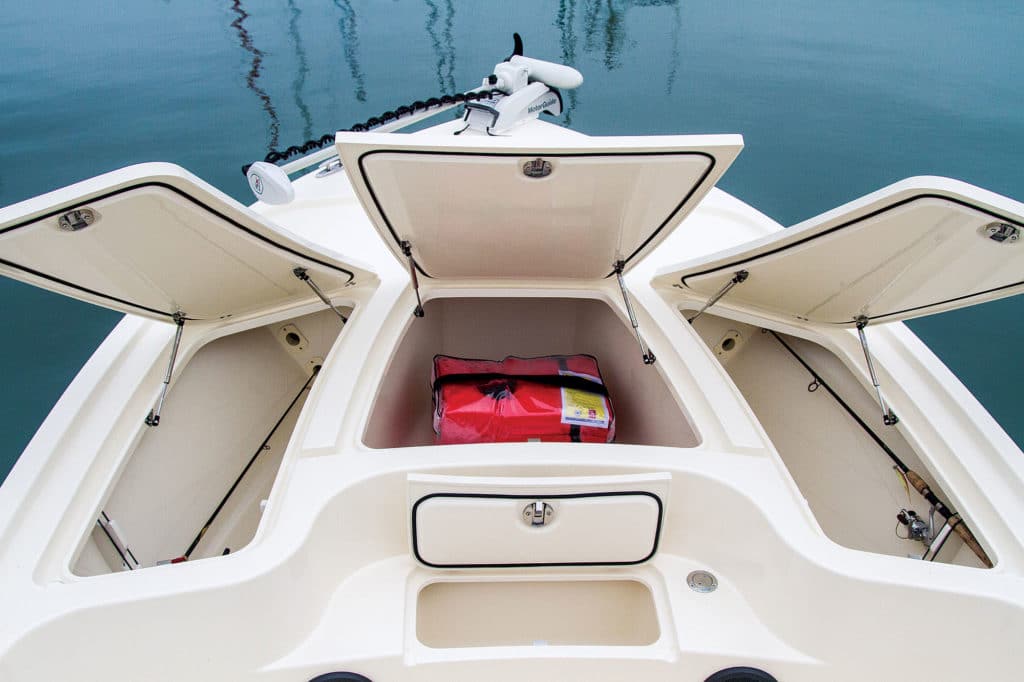
Lang turned over the helm to local fishing expert Capt. Tuck Scott, with Fly Fish Beaufort, who motored the 231 away from the dock. A forecast light breeze had started picking up midday, so Scott looked for a marsh edge protected from the wind.
Just south of the McTeer Bridge in the Beaufort River, he tucked bow-in and deployed the 231’s two optional Power-Poles. With both anchors down, the bay boat proved rock-steady (though even with them up, the boat barely reacted to our weight shifts).
Pate, Scott and I unlimbered the three spinning rods from the vertical holders next to the console. To match the console’s stylish rake, the three holders angle astern. The rod butts rest on a piece of black nonskid; the King StarBoard retaining pieces below the reels and between the first and second guides were obviously designed to be minimal and unobtrusive.
With the rod holders tucked right up against the console, the walkways are remarkably open. Scout also removed the usual undergunwale horizontal rod storage and placed it beneath two cavernous foredeck lockers, so the port and starboard bulkheads remain slender. That design makes the space between the console and hull sides wide enough for an easy do-si-do while still allowing storage ahead for as many as 10 rods up to 9½ feet long.
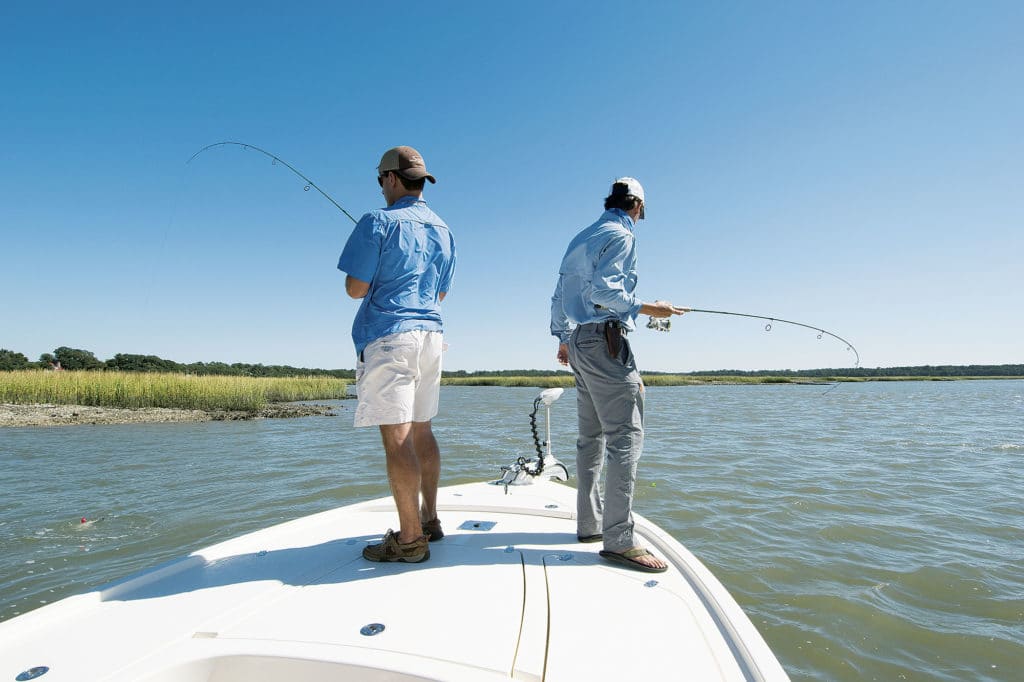
Fish in Style
Scott dip-netted some bait shrimp from the starboard aft 26-gallon livewell. Pate remarked afterward that we could have easily placed the shrimp in the smaller 11-gallon well that’s rather smartly plumbed beneath the foredeck step.
That step also serves its intended purpose, providing a way to mount the high foredeck without using a hiker’s lunge. The 231’s proud bow, which helps cleave waves and throw spray aside, also means the foredeck rises a good distance from the main deck; its height measured about 18 to 20 inches.
That high deck also creates tremendous space beneath the hatches for the rod storage and the standard 45-quart Yeti that Scout embeds in a recess beneath the center hatch.
Pate and I threaded our live shrimp onto small hooks beneath popping corks and cast from the bow, where we found plenty of room to work without tangling. We raised the Power-Poles and used the optional MotorGuide Xi5 to search out redfish cruising the oyster beds. At the next point, we stopped and employed the Xi5’s Pinpoint GPS to hold us in place with its virtual anchor. A few test casts later and we found an awaiting school of rat reds poised to ambush our bait.
Although we planned to release anything we caught, I decided to put several legal-size reds into the 26-gallon port aft release well in case we needed them for photos. All hatches, including those above the livewells, come with slam latches. Lift straight up to open the hatch, and simply let the lid fall to close it quietly and easily.
Scout also finishes the surface beneath each lid and includes gaskets for a better seal. The company attaches gas-assist rams on all hatches except livewells.
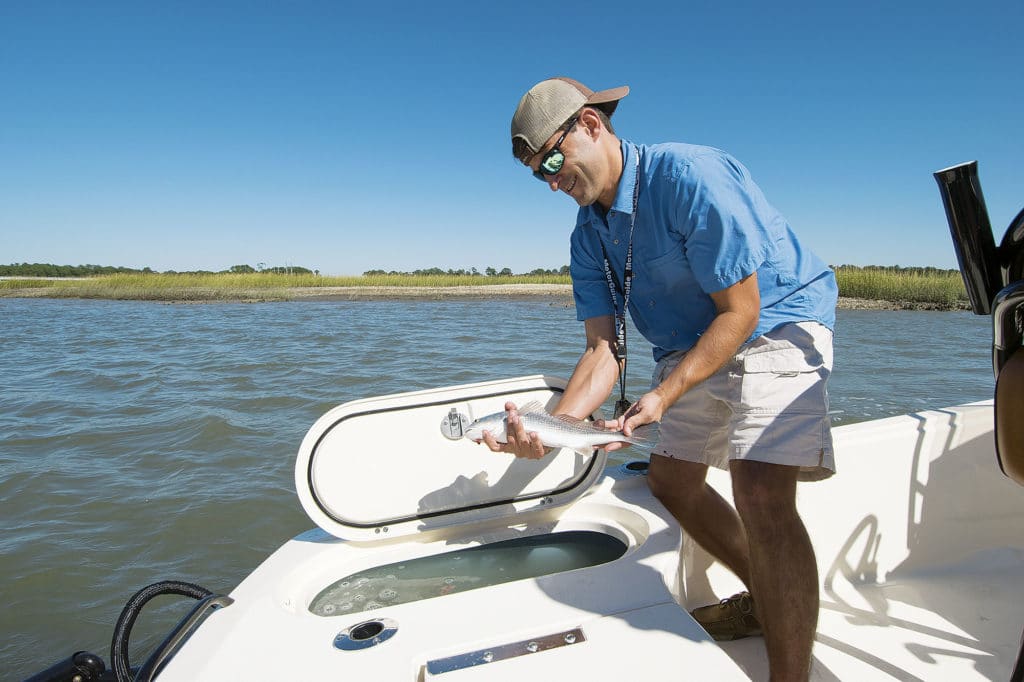
Fast and Nimble
Although it’s considered sacrilegious aboard some boats to leave the fish biting, we simply had to. We had caught 15 to 20 redfish, but it was time to test the 231’s performance and handling.
Scott and I settled into the standard performance leaning post, a unique Scout design that cradles the captain and passenger with padding at the hip. With the standard jack plate and Yamaha F300 trimmed down, but no trim-tab assistance, we launched onto plane and reached 30 mph in about 6 seconds (Yamaha tests show 5.42 seconds, with a time to plane of 3.3 seconds.) On one run, we topped out at 59.8 mph, turning 6,000 rpm while still attaining 1.9 mpg.
If we had carried a lighter load — we ran with four adults, two full livewells, a full tank of fuel and five batteries, plus gear and a cooler — this boat would have easily topped 60 mph. (The F300 turned a 14½-by-21-inch Yamaha Pro Series prop.)
Because this boat’s hull features a step design with a pad, I approached turning with caution. I had already trimmed out the engine a bit for optimal planing, which is also crucial for stepped-hull performance. But the 231 showed no ill tendencies, and with the optional power-assist steering, it carved graceful turns at half speed.
Raising the 6-inch jack plate aided planing as well, though I found little need for the standard trim tabs except to high-side the boat in the windblown waters of Port Royal Sound.
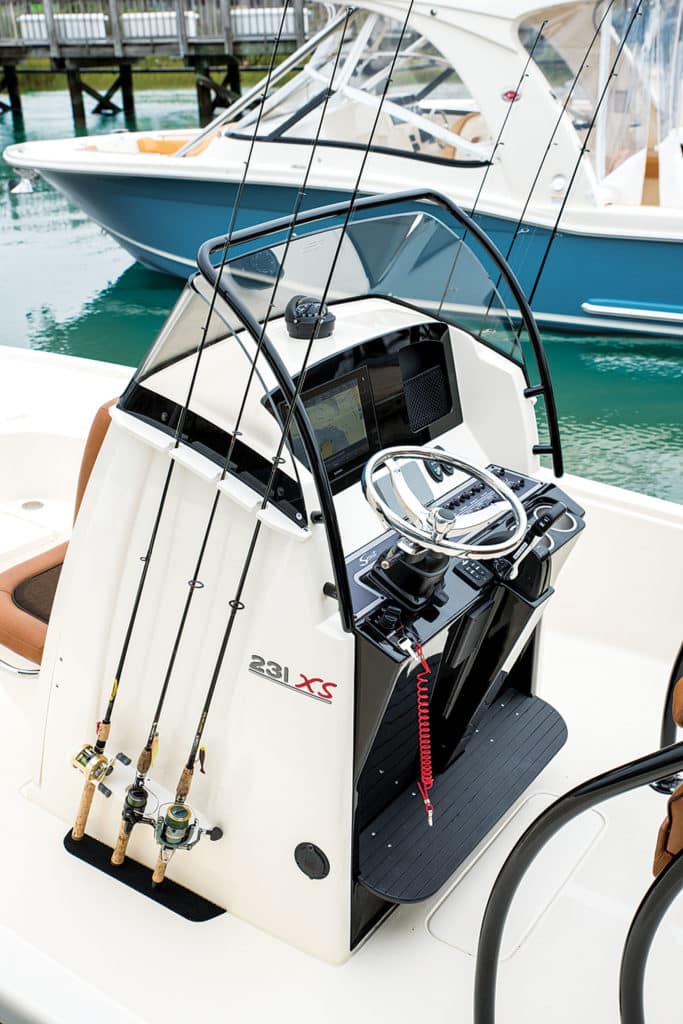
Finishing Touch
Scout clearly steps beyond average imagination to create its fishing boats. The company designers think through the function of every piece of equipment while still demonstrating classic flair.
The 231’s helm blends dark and light colors for dramatic and purpose-built effect, and my test boat featured a beautifully flush-mounted Garmin 7612xsv 12-inch multifunction display.
Two of the four aft rod holders and two flanking the forward console seat double as cup holders. Scout added a pair of regular rod holders in the aft deck behind the fold-down transom seat.
With its many distinctive touches and bigger-boat feel, I’d say this inshore-tournament bay boat easily delivers on its promise for “a little more.”
